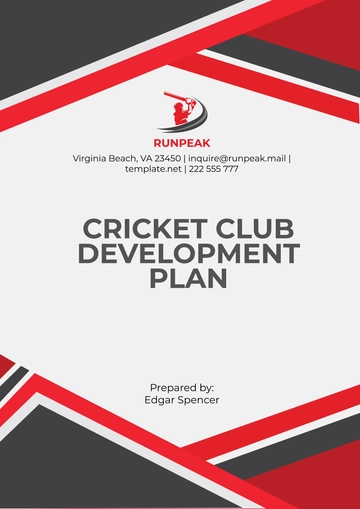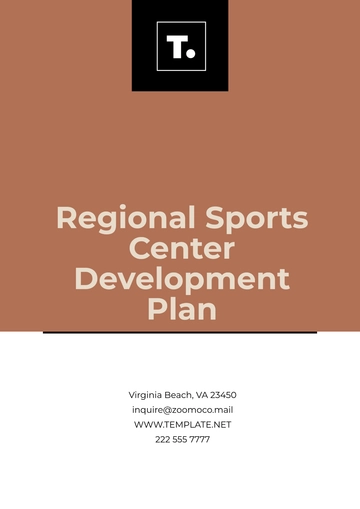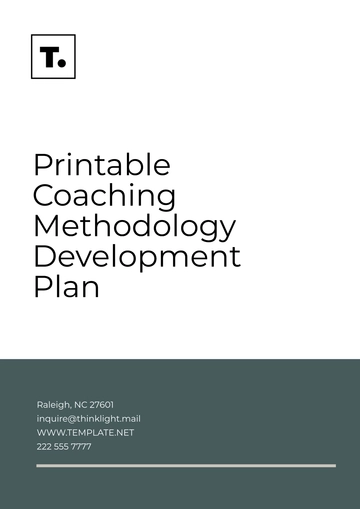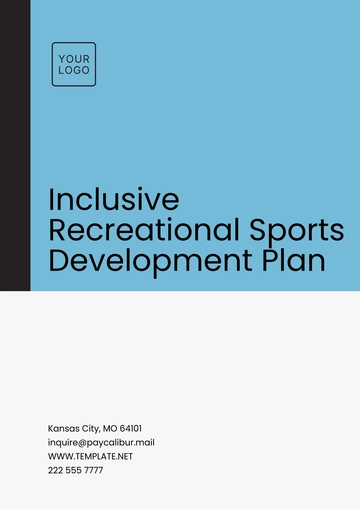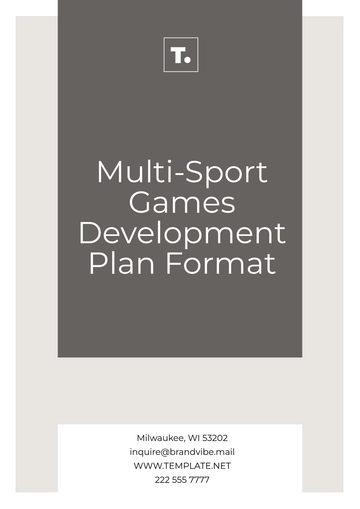Free Competitive Sports Talent Development Plan
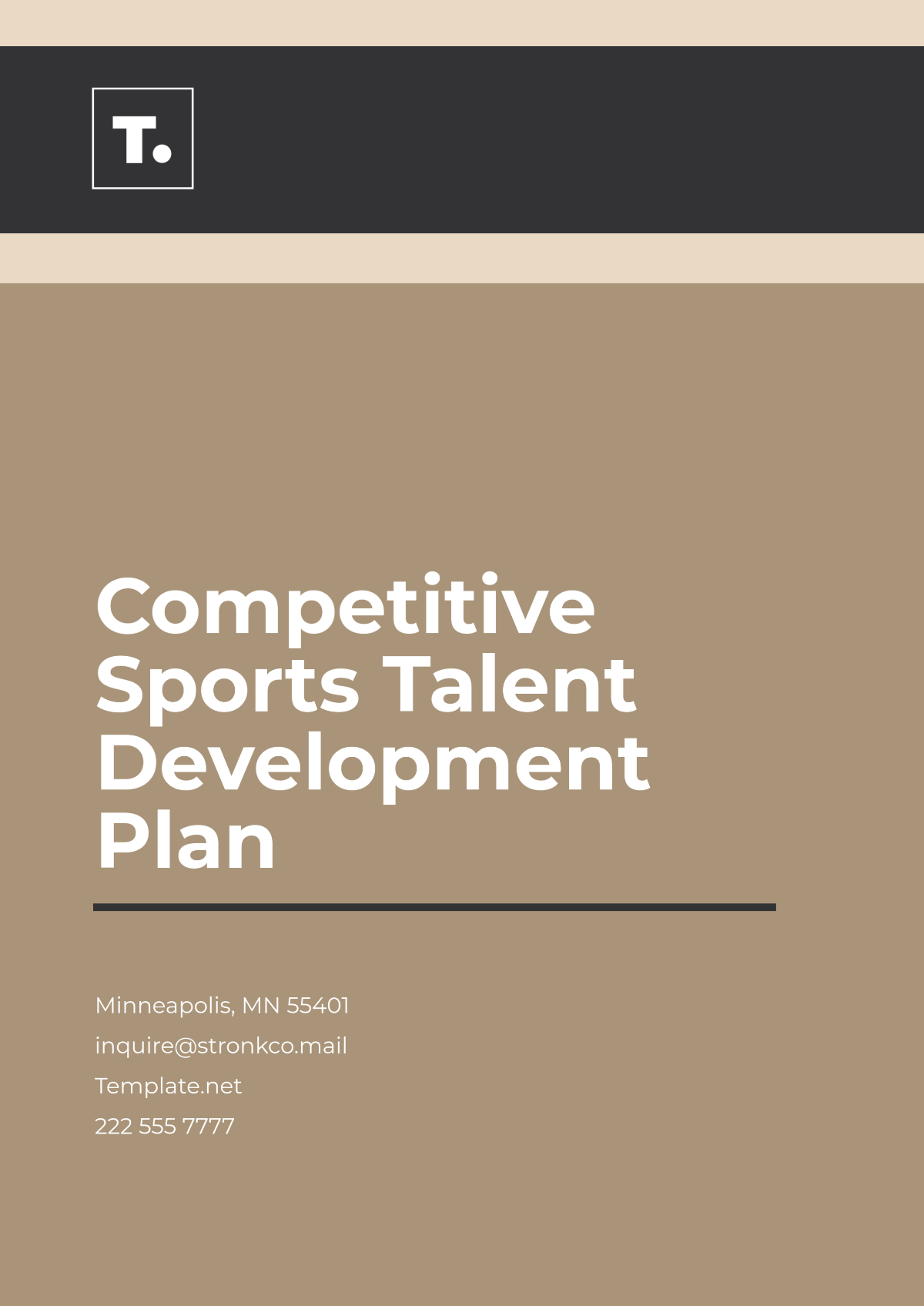
Prepared by: [Your Name]
Date: March 25, 2050
1. Introduction
The objective of this development plan is to outline a strategic approach for identifying, nurturing, and developing talent in competitive sports. This program aims to harness the individual potential of athletes through structured training, education, and support, ensuring they excel not only in their sport but also in their personal development. This document serves as a roadmap for stakeholders, guiding them through the necessary steps, frameworks, and resources required to achieve these goals. Additionally, it ensures the holistic development of athletes, encompassing physical, mental, academic, and life skills for long-term success.
2. Talent Identification Process
2.1 Scouting Network Development
Building a robust scouting network is crucial for discovering and nurturing potential talent early in their sporting careers. A strategic approach involves:
Partnerships: Establish collaborations with schools, sports clubs, academies, and community organizations to create a wide-reaching network.
Digital Scouting: Implement a digital platform for talent tracking, which includes video analysis, performance data tracking, and scouting reports, enabling a more streamlined and accessible identification process.
Workshops and Training: Organize regular workshops and training sessions for scouts to keep them updated on new scouting methodologies, ensuring consistent talent identification.
2.2 Talent Assessment Criteria
To ensure a fair and consistent selection process, a clear and detailed set of assessment criteria should be developed, including:
Physical Attributes: Speed, strength, agility, endurance, and injury history.
Mental Aptitude: Decision-making skills, discipline, resilience, focus, and ability to handle pressure.
Technical Skills: Sport-specific skills, overall athletic proficiency, and adaptability.
Potential for Growth: Ability to learn, develop, and excel with appropriate training, along with coachability and work ethic.
Character Evaluation: Assess emotional intelligence, teamwork, and leadership potential.
3. Training and Development Framework
3.1 Individualized Training Programs
Customized and athlete-specific training plans are essential to foster development. Key areas of focus should include:
Technical Skills: Regular drills and sport-specific practice to improve precision and performance.
Physical Fitness: Tailored fitness regimes, including strength, flexibility, endurance, and injury prevention techniques.
Mental Training: Workshops and individualized coaching on focus, mental resilience, stress management, visualization techniques, and mindfulness practices.
3.2 Advanced Coaching Development
A talented coaching staff is integral to an athlete’s growth. Focus on:
Ongoing Training and Certification: Regular updates and certifications in the latest training methods, sports science, and leadership skills.
Professional Development: Access to seminars, workshops, and conferences to enhance coaching knowledge and expertise.
Collaborative Coaching Environment: Foster a culture of teamwork and creativity among coaches, ensuring a dynamic and innovative approach to training.
4. Education and Personal Development
4.1 Academic Support
Balancing sports and academics is essential for long-term success. Provide:
Flexible Academic Schedules: Design flexible school or university schedules to accommodate intense training and competition schedules.
Tutoring and Academic Resources: Ensure athletes have access to subject-specific tutoring, online learning platforms, and study groups.
Scholarships and Financial Aid: Provide scholarship opportunities to academically promising athletes, ensuring financial stability and support.
4.2 Life Skills and Leadership Development
Athletes should be equipped with essential life skills for a fulfilling career after sports:
Time Management and Organizational Skills: Workshops on balancing academics, training, and personal life.
Financial Literacy: Offer financial planning and literacy workshops, including savings, investments, and post-career financial management.
Communication and Leadership: Leadership training, public speaking, and team-building exercises that cultivate essential interpersonal skills.
5. Performance Evaluation and Feedback
5.1 Regular Performance Reviews
Ongoing evaluations are crucial to track progress and identify areas for improvement. This includes:
Quarterly Assessments: Structured reviews that assess both qualitative (e.g., coach observations) and quantitative (e.g., performance metrics, statistics) data.
Feedback Sessions: Collaborative feedback sessions involving athletes, coaches, and mentors to provide constructive criticism and set development goals.
Performance Improvement Plans: Tailored plans that focus on areas needing enhancement, ensuring continuous growth.
5.2 Data-Driven Insights
Leverage technology to gain insights into athlete performance and progress:
Sports Analytics: Use performance tracking tools, including video analysis software, to break down key metrics and improve training.
Wearable Technology: Implement wearable devices to track physiological data (e.g., heart rate, movement efficiency) and optimize training.
Data Analytics: Apply advanced statistical analysis to identify performance patterns and make data-driven decisions on training adjustments.
6. Resource Allocation and Management
6.1 Funding Strategies
Ensuring sustained financial support is essential for the program’s success. Funding sources include:
Government Grants and Public Funding: Explore available sports development grants and initiatives for talent programs.
Corporate Partnerships and Sponsorships: Secure long-term sponsorships and corporate partnerships to provide financial backing.
Fundraising and Community Involvement: Organize events and campaigns that involve the community, generating both funds and support for the program.
6.2 Facilities and Equipment
State-of-the-art facilities and equipment are key to providing the best training environment:
Regular Facility Upgrades: Invest in and maintain modern sports facilities, including gyms, training grounds, and rehabilitation centers.
Technology Integration: Incorporate the latest training technologies, such as virtual reality or biomechanics analysis tools, to enhance athlete performance.
Recovery and Rehabilitation: Ensure access to specialized equipment for injury prevention, recovery, and rehabilitation.
7. Athlete Well-Being and Support
7.1 Physical Health and Injury Prevention
Focus on maintaining the physical health and safety of athletes:
Injury Prevention Programs: Regular screenings, injury prevention workshops, and monitoring of physical conditions.
Rehabilitation Services: Access to physiotherapists, sports medicine specialists, and injury recovery protocols.
Nutrition and Recovery: Provide expert nutrition advice and recovery programs to enhance overall performance and health.
7.2 Mental Health Support
Support athletes’ mental well-being, essential for sustained success:
Psychological Support Services: Offer counseling, stress management workshops, and mental resilience programs.
Mental Health Awareness: Create a culture of openness regarding mental health, allowing athletes to seek help when needed.
Peer Support Programs: Implement peer mentoring systems to foster emotional support among athletes.
8. Long-Term Career and Post-Sport Preparation
8.1 Career Development
Prepare athletes for careers beyond sports:
Transition Support: Provide career counseling and guidance for athletes transitioning into post-sport careers.
Networking Opportunities: Facilitate access to industry professionals, internship opportunities, and mentorship programs.
Entrepreneurship and Business Training: Offer workshops on entrepreneurship, personal branding, and business skills.
8.2 Legacy Building
Ensure athletes leave a lasting impact on their sport and community:
Ambassador Programs: Encourage athletes to become ambassadors for their sport, promoting it at grassroots levels.
Community Involvement: Foster involvement in community outreach programs, charity events, and public appearances.
9. Conclusion
The development of competitive sports talent requires a multifaceted, long-term commitment from all stakeholders involved. By implementing the strategies and frameworks outlined in this plan, stakeholders can create an environment that not only fosters excellence in sports but also supports athletes in becoming well-rounded individuals prepared for success both on and off the field. Regular evaluation, adaptive strategies, and continual investment in resources are essential for the sustainable growth and success of the program.
- 100% Customizable, free editor
- Access 1 Million+ Templates, photo’s & graphics
- Download or share as a template
- Click and replace photos, graphics, text, backgrounds
- Resize, crop, AI write & more
- Access advanced editor
The Competitive Sports Talent Development Plan Template from Template.net is an editable and customizable tool designed to help coaches and sports organizations track and develop talent. Tailor each plan to fit your needs with ease using our Ai Editor Tool, allowing you to modify every aspect for optimal athlete development.





